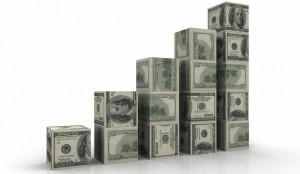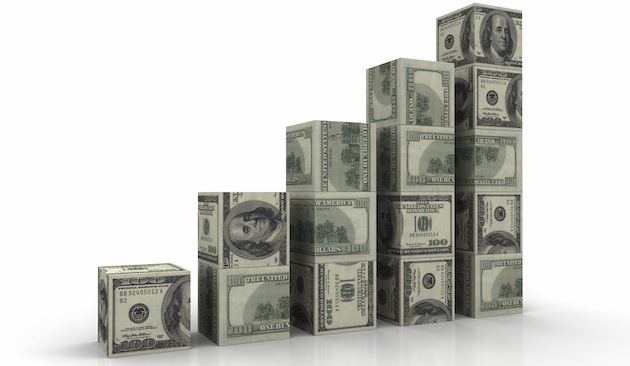There are three ways to make a lot of money in business. Typically, most businesses that are successful at making money do it in one by focusing on one of three models. They either:
- Sell many things at a low price
- Sell few things at a high price
- Sell many things at a high price
By way of example, let’s look at three high profile companies that follow different business models but are all successful.

Generally speaking, there are three ways you can successfully make money in business. Many fortunes and empires have been built using each method. Image © Thinkstock.
Wal-Mart sells many things at a low price. For every $100 you spend, Wal-Mart owners keep $3.89 after taxes. The other $96.11 goes to employees, managers, vendors, utility companies, contractors, freight, construction, etc.
Tiffany & Company sells few things at a high price. For every $100 you spend, Tiffany & Company owners keep $11.94 after taxes. The other $88.06 goes to displays, rents in high end shopping districts, employees, managers, and raw jewelry costs for gold, silver, platinum, diamonds, etc.
Apple sells many things at a high price. For every $100 you spend, Apple owners keep $23.95. The other $76.05 goes to employees, vendors, manufacturers, research and development, rents, product warranty reserves, etc.
All of these business models can be successful. Even though Apple gets to keep 6x as much money for every dollar in sales as Wal-Mart does, they both have market capitalizations of between $200 billion and $400 billion, making them among the largest economic entities in the world.
There Are a Handful of Perfect Businesses In The World
Then, you get into the realm of the perfect business. There are very few near perfect businesses in existence. I’m a fan of cataloging perfect businesses and keeping an eye on them so that whenever they fall below my estimate of intrinsic value, or even get near it, I can write a check and get some shares for the family’s permanent capital reserve; the things that are largely ignored and held for year after year, decade after decade. Even if you only get an opportunity to add to a stake in a near perfect business once every ten years, you should be happy.
[mainbodyad]One such company is Coca-Cola, which is often used as the gold standard in business education since it is accessible to everyone as a consumer and the financial statements are relatively simple. What makes Coca-Cola so special? It sells many things at a low price like Wal-Mart, but its trademark protections, consumer affection, cost structure, built-in inflation protections, and other factors mean that for every $100 it generates in sales, it gets to keep $33.63 after taxes.
Flipping it around, to earn $100 in after-tax profit, Coke would only have to generate $297 in sales, whereas Wal-Mart would have to generate $865 in sales.
Of course, none of this tells you whether a company is a good investment. It is just a starting point. You need to look at the total amount of profit generated relative to capital invested, the consistency and staying power of that profitability, growth prospects, and last but certainly not least, the price you pay for your ownership stake. Even a great business like Coke can be a terrible investment. Anyone buying shares back in the late 1990’s when the stock was at 50x earnings was behaving in an incredibly stupid way because the earnings yield was only 2% for a mature company; much less than the rate of inflation.



